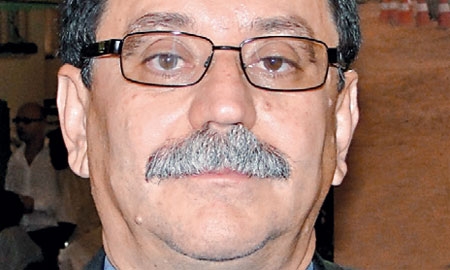At a cost of $9 billion, the largest single foreign investment ever in the history of the oil industry in this West African country, Angola LNG is a benchmark project that is set to double the stakes in Angola’s lucrative energy sector.
“What this project did was to put Angola on the map of liquefied natural gas (LNG) countries, because there are not many – there are only 15 or 20 countries around the world that produce LNG. This project has put Angola on the map of those countries. And by doing that, it has created a lot of interest among foreign companies who want to invest in Angola in gas exploration,” says Angola LNG chairman of the board Antonio Orfao.
“There is already another consortium, apart from Angola LNG, which is focusing on exploring and producing gas for other industries. So Angola LNG is not the end, but rather the start of an era in Angola with a very bright future. In short, this project is the first of what we hope will be many others.”
Angola LNG was initially created, says Mr. Orfao, to help reduce the flaring of associated gas produced by the deepwater oil blocks. He says that Angola LNG will continue to use associated gas for a number of years, consequently converting “what was a problem into an opportunity.”
Developed in partnership with Sonagas, the state gas company, and four foreign oil multinationals operating in Angola (Chevron, BP Exploration, Eni and Total), the greenfield project is the cornerstone of Angola’s plans to develop and commercialize its natural gas resources.
BEFORE THE CREATION OF ANGOLA LNG AND DUE TO A LACK OF LOCAL DEMAND, NATURAL GAS WAS SIMPLY FLARED OR RE-INJECTED INTO THE RESERVOIRS
THE ANGOLA LNG LIQUEFACTION FACILITY, LOCATED IN THE PROVINCE OF ZAIRE, WILL BE EQUIPPED TO RECEIVE ABOUT 1 BILLION CUBIC FEET OF GAS PER DAY
|
“Angola LNG will actually produce five different products. We will produce liquefied natural gas, the majority of which will be exported because there is no market for it in Angola, at least for the time being. Maybe in the future we will be able to use some of it, most likely to produce power. We will also produce propane, butane and condensates. All of the butane can be used in Angola; it’s the gas that Angolans use to cook at home. In addition, we will also produce a certain amount of treated natural gas for Angola, which can be used for power or for petrochemicals,” explains Mr. Orfao.
Angola LNG will collect and transport gas located offshore to an onshore liquefaction facility located in the Soyo region, Zaire Province. The plant will be equipped to receive roughly a billion cubic feet of gas per day, and will produce 5.2 million metric tons of LNG and related gas liquid products per year. The majority of the LNG will be exported. Indeed, the absence of a local market was one of the main reasons that gas from Angola’s petroleum wells was initially flared, or re-injected into the reservoirs.
Roughly 125 million cubic feet per day will be supplied to Sonangol for domestic use. Sonagas, the gas distribution subsidiary of Sonangol, has plans to construct a large industrial park in Soyo, which will use this gas to power petrochemical and other downstream industries.
The first LNG from the project, which are expected by early 2012, are intended to be delivered to the U.S. via the Clean Energy re-gasification terminal near Pascagoula, Mississippi. However Mr. Orfao says Angola LNG is no longer considering the U.S. as its main export market, but one of several important markets.
“This is an ever-changing industry. When our project was sanctioned three years ago, when it was approved and when construction began, our market was the United States. It was a good market because we could export all of our LNG there and get a good price,” he says.
“This is no longer true because there is now what is called unconventional gas in the U.S., which means that there is a much smaller market for LNG there, and the price is coming down as well. As a result of this surplus in the U.S., it looks now that the best place for our LNG gas would be in other markets like Europe, for instance, that are more attractive. Currently, all five shareholders are discussing other places to sell our gas.”
The construction of the LNG plant south of the Congo River, and just west of Soyo, is having a significant impact on the nearby city. As Mr. Orfao points out, Angola LNG is not typical in Angola’s energy sector as it is an onshore project. As such, Angola LNG has been careful to involve the local community from the beginning. Nearly 4,000 of the 6,000 workers hired by Overseas Bechtel for the construction of the plant were locals, says the chairman, who also confirms that the services of a number of local companies have been used.
“The fact that Angola LNG is in Soyo means that a lot of our services are going there and the scenario is changing. Two years ago, there weren’t any restaurants there, and now not only is there a wide selection of restaurants, you can even have pizza delivered to your doorstep. There are also new airlines coming in, eight flights per day, seven days a week. People are enjoying Soyo by going to resorts on the weekends, just to relax,” comments Mr. Orfao.
In addition to the positive growth the project is indirectly having on the local community, Angola LNG is also directly involved in sponsoring heath and education initiatives in Zaire Province where Soyo is located.

0 COMMENTS